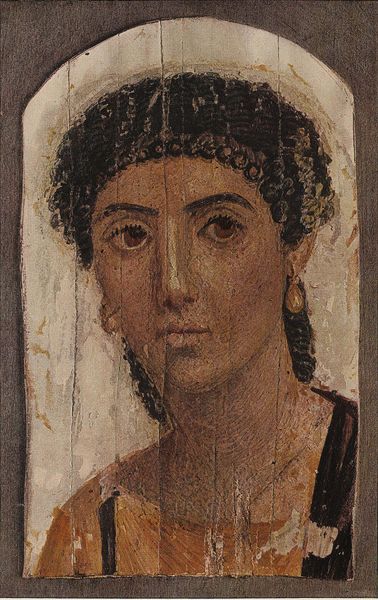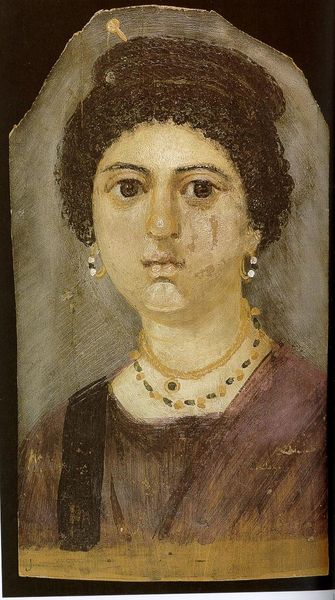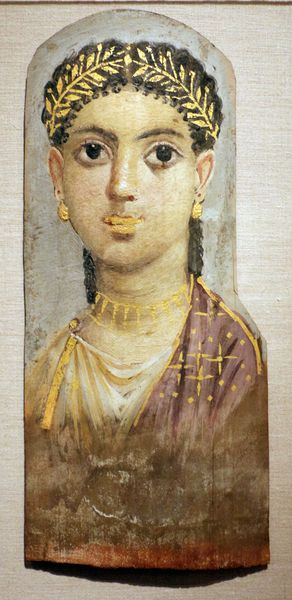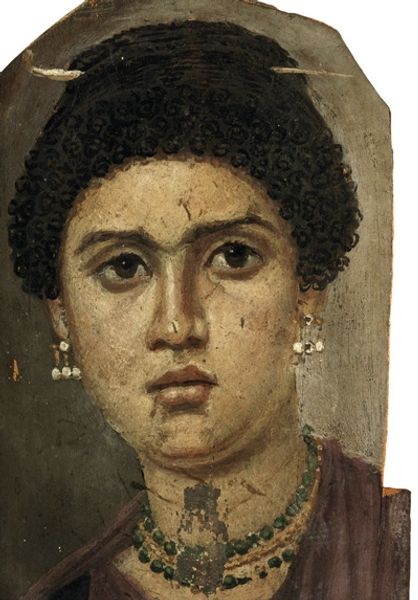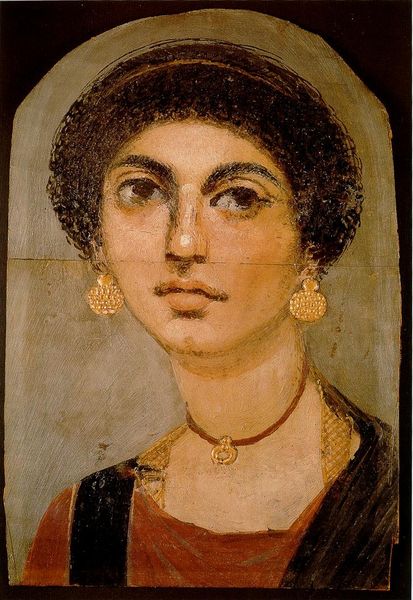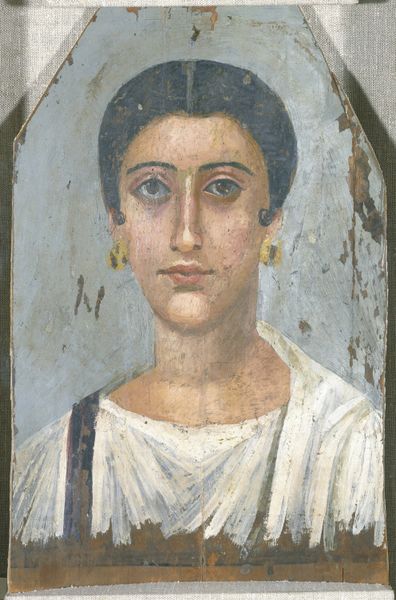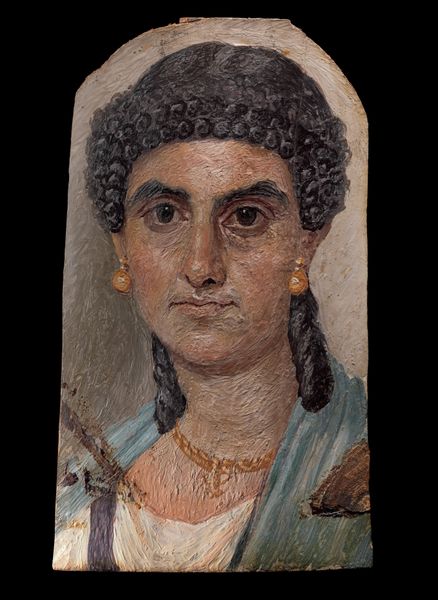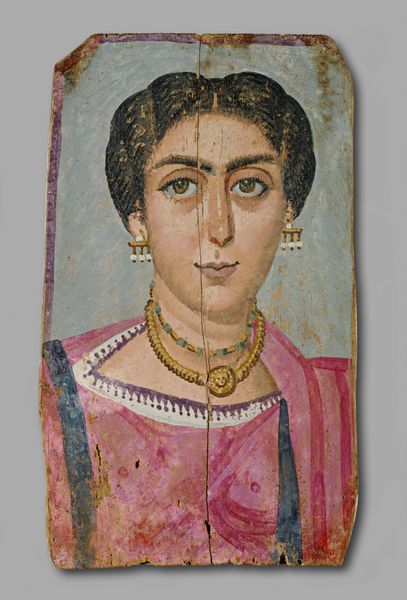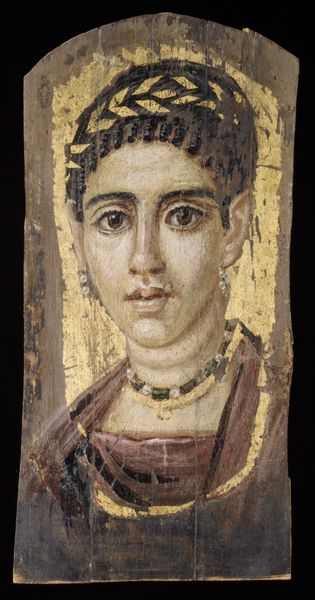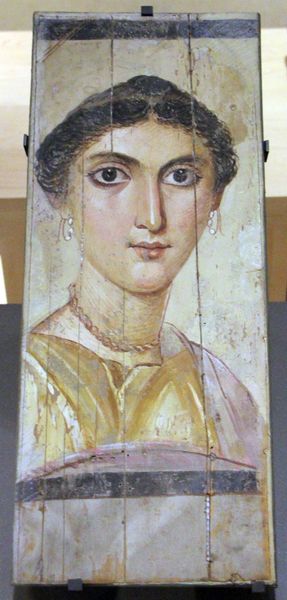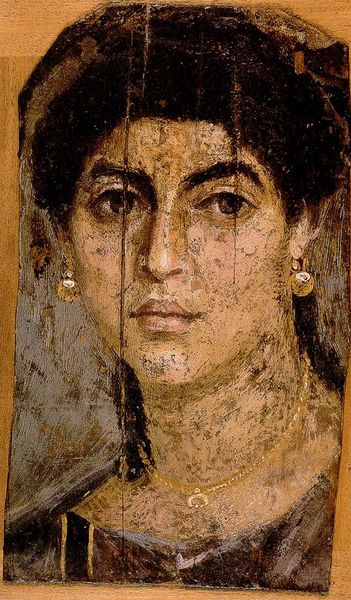
Mummy Portrait of Lady Aline, from Hawara
0:00
0:00
fayumportrait
Egyptian Museum of Berlin, Berlin, Germany
oil-paint
#
portrait
#
oil-paint
#
ancient-egyptian-art
#
figuration
#
oil painting
#
ancient-mediterranean
#
realism
Copyright: Public domain
Editor: This is an oil painting known as the "Mummy Portrait of Lady Aline, from Hawara," housed in the Egyptian Museum of Berlin. The thing that strikes me most is the incredible realism – she looks like she could be anyone. What do you see in this piece, with your expertise? Curator: Indeed, the realism is captivating. Look at the rendering of her jewelry and hairstyle—they aren’t merely decorative but signifiers of her status and cultural identity. The Greeks in Egypt favored portraiture of realists that mirrored the symbols of roman hegemony. Don't you see how Lady Aline is represented not just as an individual, but also as an embodiment of the fusion between Egyptian tradition and Roman influence? Editor: I do. I guess I hadn’t considered the significance of the jewelry and her Greco-Roman hairstyle within this Egyptian context. So they would’ve recognized and interpreted her position immediately? Curator: Precisely. It’s a statement about belonging and power. Now, consider the funerary aspect: these portraits were placed over mummies, meant to offer continued existence. Her jewels may also symbolize a journey. Editor: A journey… into the afterlife, maybe? Curator: Perhaps. Jewels signify the way to carry identity into a next, transformative chapter. This chapter blends traditions and prepares for death with all your history. Editor: It’s amazing to realize all the things a single image can say. I will carry the weight of that meaning. Curator: Exactly. When we engage with such portraits, we’re deciphering not just art but entire worldviews encoded within symbols and imagery.
Comments
No comments
Be the first to comment and join the conversation on the ultimate creative platform.
